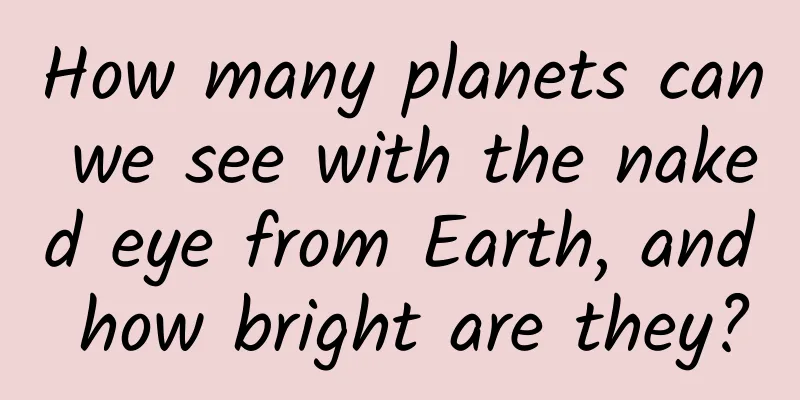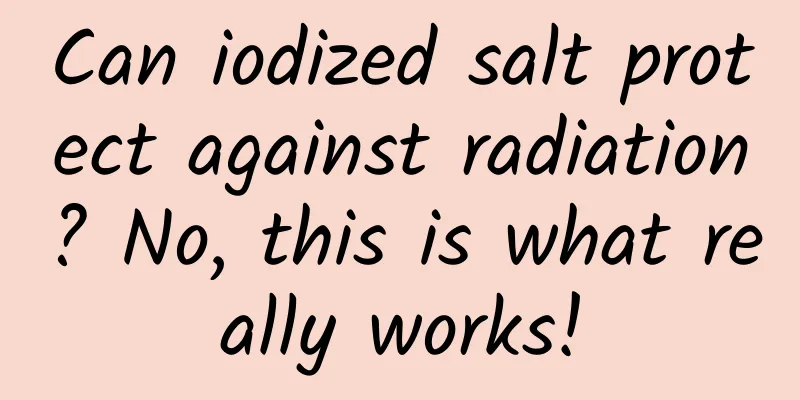How many planets can we see with the naked eye from Earth, and how bright are they?

|
This article is based on a question from netizens: Why can we only see the sun and the moon on Earth and not other planets? This question itself is a pseudo-question. There are many planets visible from the earth. Five can be seen with the naked eye. If you use a telescope, you can see more. Not only can all the planets in the solar system be seen, but more than 4,000 planets outside the solar system have also been discovered. There were originally nine planets in the solar system. At the 26th International Astronomical Union in 2006, Pluto was disqualified as a planet, so there are now eight planets in the solar system, namely the eight major planets. There are five planets that can be seen with the naked eye, namely Mercury, Venus, Mars, Jupiter, and Saturn. These five planets were valued by Chinese astronomers and astrologers in ancient times, and they were matched with the five elements, namely gold, wood, water, fire, and earth (stars). With an astronomical telescope, you can also see several other planets that are invisible to the naked eye, namely the solar system planets farthest from us - Uranus and Neptune. Pluto, which was kicked out of the planet team, can also be seen with a telescope. Planets themselves do not emit light, and they are visible only by reflecting the light of stars, just like we see all the non-luminous things on Earth, which are visible only by reflecting sunlight and lights. The planets in the solar system can be seen by us by reflecting sunlight, and their brightness varies with the distance and angle between these planets and the sun when they orbit the sun, and the angle of light observed by the human eye. Just like the moon, when we see the sun shining on the moon from the front, it is a full moon and the brightness is high; when we see the sun shining on the side or back of the moon, we can only see part of the moon or even no moon, and the brightness is low or even non-existent. Of the five planets visible to the naked eye, Venus is the brightest, the brightest star in the night sky, followed by Jupiter and Mars. The brightness of these two stars will change according to the distance from us and the observation angle, surpassing each other. Sometimes Jupiter is brighter, and sometimes Mars is brighter. The reason for this is that Venus is the closest to us, only more than 40 million kilometers at the closest, and its size is about the same as the Earth; Mars is the second closest to us, only about 55 million kilometers at the closest, but its volume is only 15% of the Earth; although Jupiter is slightly farther away from us, more than 600 million kilometers at the closest, Jupiter is very large, more than 1,300 times that of the Earth. Therefore, Venus is the brightest star, and Jupiter is sometimes as bright as Venus, often surpassing Mars. Among the five planets visible to the naked eye, Saturn and Mercury are more difficult to observe. Although Saturn is also very large, 745 times the size of the Earth, it is the farthest from the Earth among the five planets, more than 1.2 billion kilometers away at its closest point, so it looks darker than the other planets; although Mercury is very small, it is not far from us, only more than 90 million kilometers away, and very close to the Sun, so it is also brighter, and it should not be difficult to observe. However, it is precisely because it is too close to the Sun that Mercury and the Sun appear at the same time when viewed from the Earth, and it is often hidden in the strong light of the Sun, so it is generally difficult to observe. It is said that the great astronomer Copernicus never observed Mercury in his lifetime, which was a pity. There are gas planets and rocky planets. Four of the eight planets are rocky planets, also known as terrestrial planets, that is, planets similar to the Earth. Counting from the closest to the sun, they are Mercury, Venus, Earth, and Mars. There are also four gas planets, also known as Jovian planets, which are like Jupiter and are mainly composed of gas. Counting from Mars outwards, they are Jupiter, Saturn, Uranus, and Neptune. The brightness of celestial bodies is divided by apparent magnitude. The smaller the value, the brighter it is. There are also negative numbers. The more negative, the brighter it is. For example, the apparent magnitude of the sun is minus 26.7, and the apparent magnitude of the moon when it is brightest is minus 12.6. The lowest brightness of stars that can be seen by the naked eye is magnitude 6, and above magnitude 6, it cannot be seen. For every increase in apparent magnitude, the brightness increases by 2.512 times. In other words, the brightness of a fifth-magnitude star is 2.512 times that of a sixth-magnitude star; the brightness of a fourth-magnitude star is 2.512 times the brightness of a sixth-magnitude star multiplied by 2.512 times, which is about 6.31 times; the brightness of a first-magnitude star is 2.512 times the brightness of a sixth-magnitude star to the fifth power, which is about 100 times; the brightness of the sun is about 440,000 times the brightness of the moon, and about 19 billion times the brightness of a first-magnitude star. At most, the human eye can see more than 6,000 stars in the night sky. These shining stars are basically stars or galaxies, and there are very few planets, only the few introduced above. These planets revolve around the sun in their own orbits like the earth, and their distance from the earth is constantly changing, so they appear to move among the relatively motionless stars, and their positions are different every day, which is also the origin of the term planet. However, these movements are roughly around the ecliptic plane of the sun, which forms an angle of 23°26′ relative to the earth's equator. Therefore, we can see in the night sky that these planets are scattered on an arc from east to west, which is the trajectory of the sun rising and setting. Due to the different orbits and speeds of these planets, sometimes they are close, sometimes they are distant, and sometimes they are strung together with the moon. The five planets visible to the naked eye have a brightest apparent magnitude of: Venus is -4.9, Jupiter is -2.94, Mars is -2.9, Mercury is -1.9, and Saturn is -0.3. Uranus is generally invisible, but at its brightest it can reach magnitude 5.7, close to the limit of human observation, so if the eyesight is very good and the observation conditions are very good, it can be barely observed occasionally, but this is very rare. Neptune's brightest apparent magnitude is only 7.8, which is impossible for the naked eye to see. Of all the stars, the brightest is Sirius, which has an apparent magnitude of -1.46 at its brightest, which is not as bright as Mercury. Therefore, the idea that we can only see the sun and the moon on Earth and cannot see other planets is wrong. This is an original article from Space-Time Communication. Please respect the author’s copyright. Thank you for your understanding and support. |
>>: The sunglasses you wear everyday don’t work when you drive?
Recommend
TV version of video APP faces obstacles before being removed from smart TVs
The State Administration of Radio, Film and Telev...
Selling 196 million in one day, how did Himalaya achieve growth?
Himalaya was established in 2012. Its previous po...
From the "May Day" routine of operation, let's see how to "take advantage of the festival"
Not long after Qingming Festival, May Day comes. ...
3 steps to event planning and promotion!
The author summarizes the "three-part theory...
Pretentious, emotionally unstable? No! Stop scolding! We are just sensitive to order...
We all live with social evaluations and are influ...
Can data-driven operations really lead to rapid user growth?
As the saying goes, "Good wine needs no bush...
Wang Song Aohan's "Almighty Creator Thinking Course" helps you build your personal brand creator IP
Course Contents: 1. [Preliminary Course] Do you w...
Using macaca for mobile hybrid automation testing (Part 1)
[[174581]] Some basic concepts and contents: Unit...
Even bullets can’t break it, why is Rupert’s Tear so magical?
There is a very interesting little thing called &...
Zero-based video account to make money, 0 cost, 0 threshold, easy daily income of 300+ [Video Tutorial]
Zero-based video account to make money project, 0...
The reason why potato chips are so delicious is closely related to their growth
It’s the autumn outing season again, and if we ta...
How much does it cost to develop Foshan’s fresh food WeChat mini program and a fresh food mall WeChat mini program?
With the continuous advancement of the Internet, m...
30 popular short video shooting techniques!
Shooting short videos is not as difficult as you ...
Apple Developer Conference preview: In addition to iOS 9, here are some other things to watch
[[135642]] The 2015 Apple WWDC Developer Conferen...
How to attract fans for a public account? How does a new public account attract fans?
Fan economy is quite popular nowadays. If you wan...









